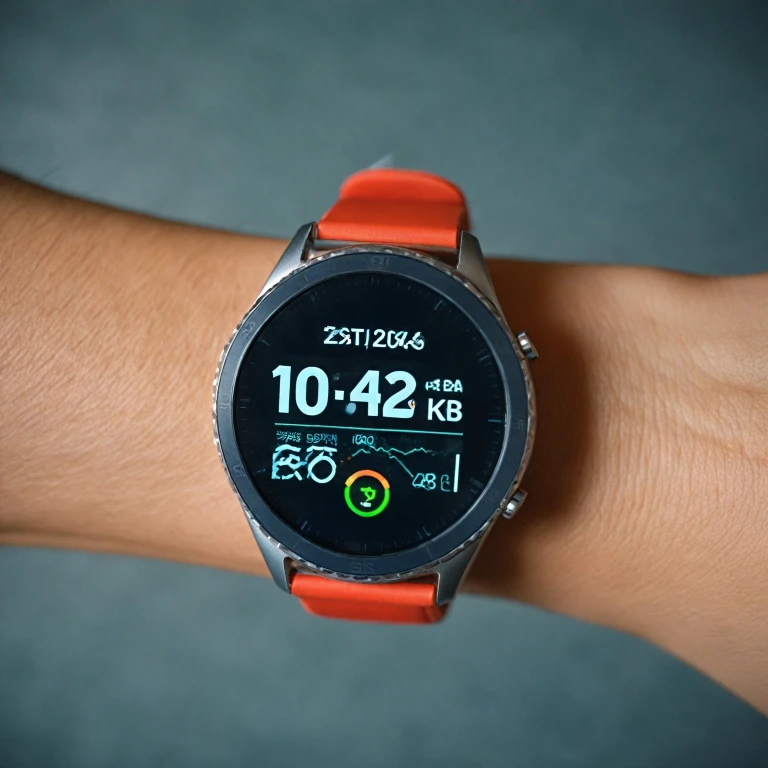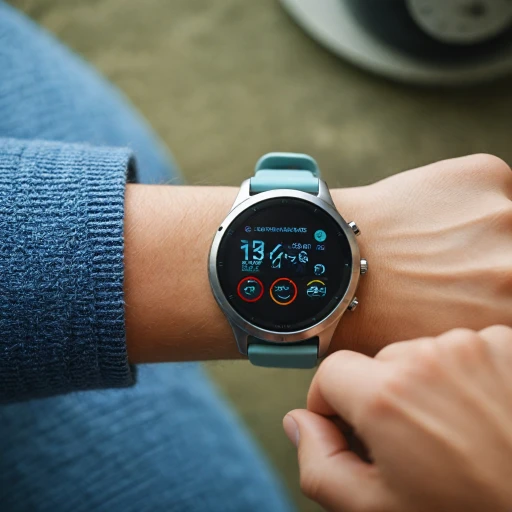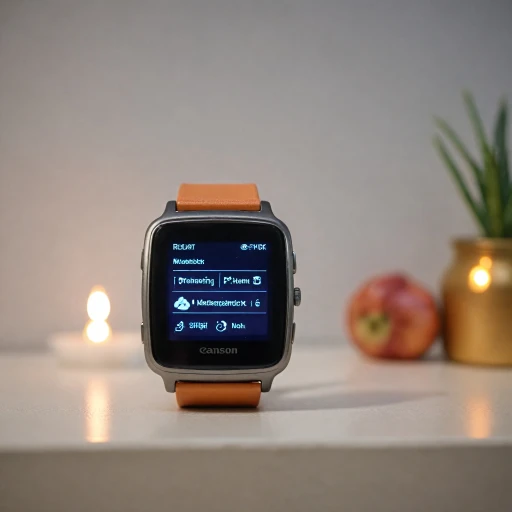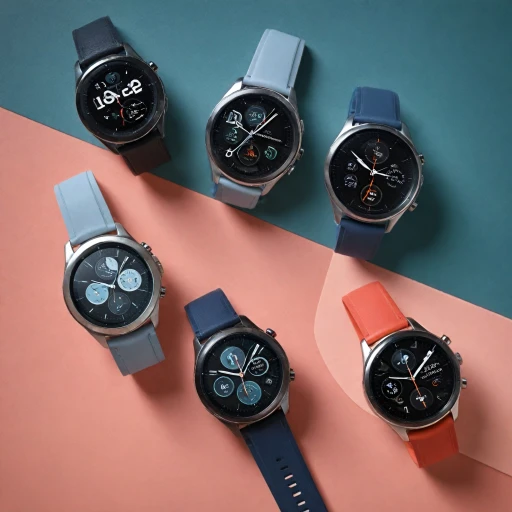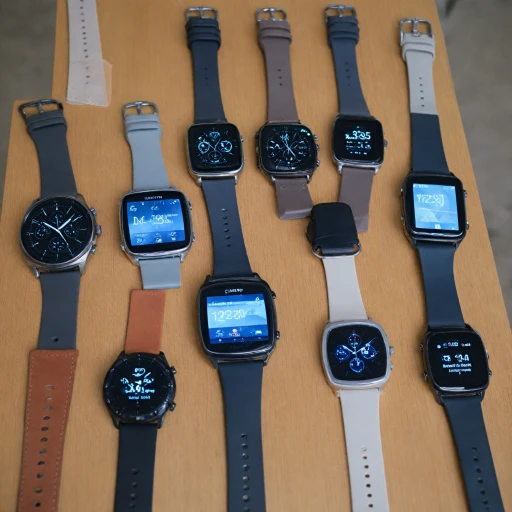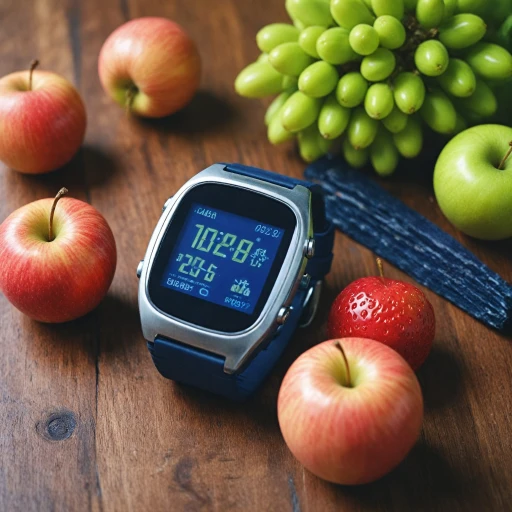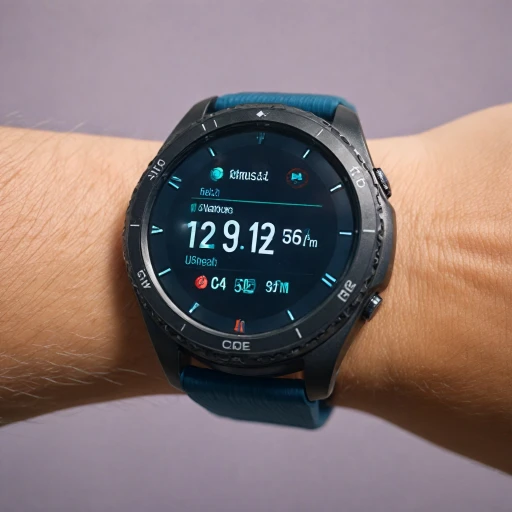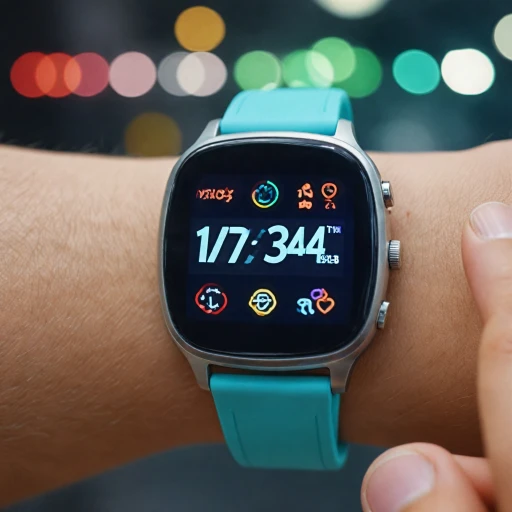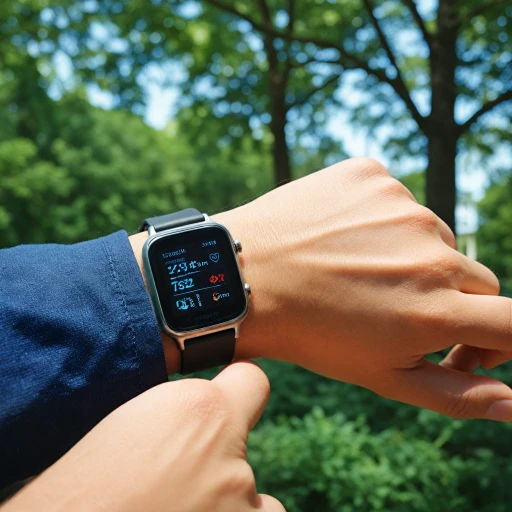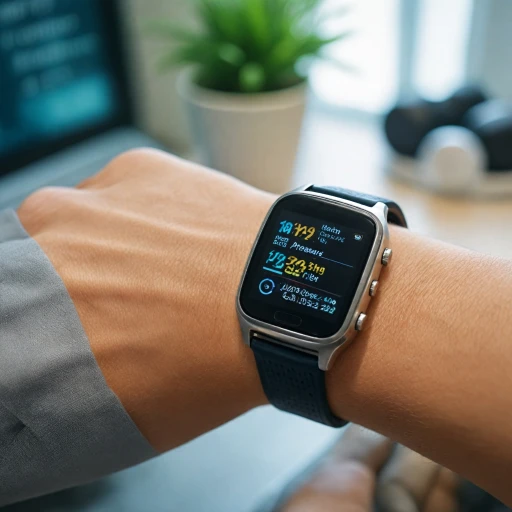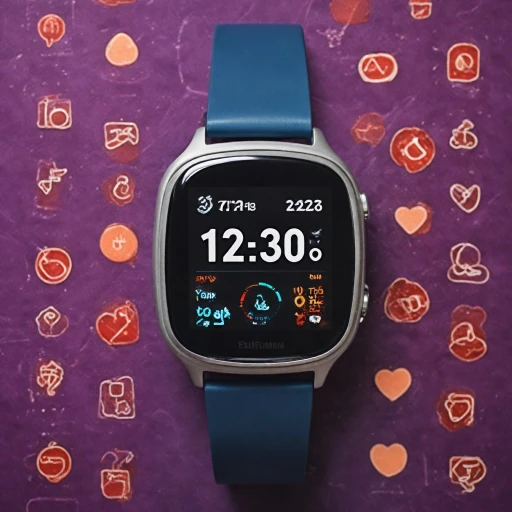Understanding the Technology Behind Blood Pressure Monitoring in Smart Watches
Innovations in Smartwatch Blood Pressure Technology
Smartwatches are becoming increasingly popular as health monitoring tools, especially with features that allow for blood pressure monitoring. This avant-garde technology combines medical science and consumer electronics to deliver convenient health-tracking solutions. Blood pressure monitoring in smartwatches, such as the Samsung Galaxy Watch or the Apple Watch series, utilizes optical sensors and advanced algorithms to estimate blood pressure non-invasively. In simple terms, these watches shine light through the skin and detect changes in blood flow. Such changes are analyzed using advanced data models to deliver a blood pressure measurement. Despite being relatively new, these tech-based monitors provide significant health benefits when used correctly. Sensors and accuracy play crucial roles. Heart rate sensors are standard, often complemented by supplementary health trackers to enhance precision. Although not yet a replacement for a traditional blood pressure monitor, they are beneficial for regular tracking and health vigilance. As you explore smartwatches, it's essential to consider factors affecting the accuracy and reliability of these devices. While your journey might reveal limitations, the advantages of continuous monitoring in smart devices are nonetheless impressive. For a deeper understanding of blood monitoring technology, check out more here.Key Features to Look for in Smart Watches with Blood Pressure Monitors
Crucial Attributes of Blood Pressure-Enabled Smart Watches
Finding the right smartwatch with a built-in blood pressure monitor involves attention to several key features. These elements not only contribute to accurate monitoring but also ensure the device aligns with your lifestyle needs.
Blood Pressure Monitoring Accuracy
Accuracy is paramount when it comes to health-related devices. Advanced smartwatches like the Samsung Galaxy Watch and the Apple Watch Series integrate comprehensive sensor technology that aims to deliver precise readings, though it’s always advised to compare them with traditional monitors for verification. Discover more about the technologies behind these integrations in our detailed exploration.
Heart Rate and Health Monitoring
Beyond checking blood pressure, smartwatches often provide heart rate monitoring, sleep analysis, and sometimes even blood oxygen levels. These features offer a more holistic view of your health, making devices like the Galaxy Watch and Huawei Watch appealing choices.
Fitness and Activity Tracking
Most blood pressure monitors on smart watches double as fitness trackers. Features like step counting, calorie tracking, and exercise mode monitoring offer a comprehensive health overview, appealing to fitness enthusiasts and those who want to maintain a more active lifestyle.
User Interface and Design
The ease of use and design are crucial. A user-friendly interface ensures you can access your health data with minimal fuss. The aesthetic appeal, from the simplicity of Apple’s designs to the bold looks of Samsung products, also plays a significant role in your daily wearability.
Battery Life and Connectivity
Long battery life and seamless connectivity with smartphones enhance user experience. Check for these features, especially if you are frequently moving or engaged in fitness activities. Both the Apple and Galaxy watches offer robust lifecycle and integration with smartphones.
Cost Consideration
Prices vary significantly based on the brand and additional features. Whether seeking the best technology or a budget-friendly option, review product specifications against the regular price and consider potential benefits like free shipping offerings.
In summary, smart watches with blood pressure monitoring capabilities cater to a range of health and fitness needs. Selecting the right one requires a thorough understanding of the above features, tailored to your personal and health requisites.
Benefits of Using Smart Watches for Blood Pressure Monitoring
Enhanced Health Monitoring Capabilities
One of the most appealing aspects of investing in a smartwatch with blood pressure monitoring is the enhanced health monitoring capabilities it provides. Owning a device that not only tracks your heart rate but also monitors your blood pressure, sleep patterns, and fitness levels can significantly benefit your overall health.
Convenience and Accessibility
A smartwatch offers the convenience of having a blood pressure monitor strapped to your wrist at all times. This can be particularly beneficial for individuals with high blood pressure, as regular monitoring is crucial. The ease of accessing this information without needing a separate device simplifies health management, promoting consistent tracking throughout the day.
Comprehensive Fitness Tracking
Many modern smart watches, such as the Apple Watch Series and Samsung Galaxy Watch, combine blood pressure monitoring with comprehensive fitness tracking. This all-in-one device enhances daily fitness routines by providing updates on steps taken, calories burned, and heart rate statistics, alongside blood pressure data. With such detailed insights at your fingertips, reaching fitness goals becomes more attainable.
Compatibility with Other Health Metrics
Integration with other vital health metrics, such as sleep patterns and blood oxygen levels, makes smart watches a versatile health ally. By accessing multiple health parameters in one platform, users receive a holistic view of their wellness, potentially uncovering links between sleep, stress levels, and blood pressure.
Proactive Health Management
With real-time data readily available, users find themselves becoming more proactive in managing their health. Smart watch notifications can encourage users to perform regular health checks, potentially highlighting irregular blood pressure readings that warrant further medical consultation.
Cost-Effectiveness
While the regular price of high-end models like the Samsung Galaxy Watch or Apple Watch might seem steep, their all-encompassing features justify the investment. The fitness and health insights they provide often surpass the capabilities of isolated health devices, potentially replacing them and saving costs in the long run.
Moreover, with options ranging from fitness trackers to more advanced models like Huawei Watch or best watches with top-tier features, there is a smart watch available for varying budgets and health needs. For those interested in troubleshooting their device's integration and connectivity issues, a useful resource is available on this FITBIT troubleshooting guide.
Challenges and Limitations of Smart Watches with Blood Pressure Monitoring
Overcoming Potential Hurdles in Blood Pressure Monitoring
While smartwatches with blood pressure monitoring have become increasingly popular for tracking health parameters, they come with their own set of challenges and limitations. Understanding these can help in making informed choices.
Accuracy and Reliability Concerns
When it comes to blood pressure smartwatches, accuracy remains a primary concern. Even with advancements in sensors, these devices may not always offer the same precision as traditional medical equipment. Regular recalibration or consultation with healthcare professionals might still be important to ensure readings are close to clinical accuracy.
Limited Features in Budget Models
Another limitation is the range of features offered, especially in budget-friendly options. While premium models like the Apple Watch Series or the Samsung Galaxy Watch offer comprehensive health tracking, inexpensive models may cut corners, impacting the efficiency of heart rate, blood oxygen, and blood pressure monitoring.
Compatibility and Integration Issues
Compatibility can be another hurdle. For instance, fitness trackers or health-monitoring watches might not sync well with all smartphone brands, leading to inaccuracies or lost data. It's wise to check device compatibility before purchasing to avoid such issues.
Impact of Wearer and Environmental Factors
Blood pressure measurements can be significantly affected by various factors related to the smartwatch wearer, including skin tone, temperature, and even the position of the watch on the wrist. Ensuring proper fit and usage becomes crucial for reliable monitoring.
Battery Life Constraints
Finally, the requirement for regular charging can be inconvenient for some users. Heart rate and blood pressure monitoring features tend to drain the battery quickly, meaning more frequent charges are necessary. This could affect the portability and overall user experience.
Despite these limitations, continuous technological improvements are expected to address some of these challenges in the coming years, making these devices an integral part of personal health management.
Comparing Popular Smart Watches with Blood Pressure Monitoring
Comparing Popular Models of Blood Pressure Monitoring Smart Watches
In the world of smart watches with integrated blood pressure monitors, several key players lead the market. These devices not only offer health-tracking capabilities but also integrate comprehensive fitness features. Here's a breakdown of some popular models to help you weigh your options:- Apple Watch Series: Known for its cutting-edge health metrics, the Apple Watch Series provides advanced features for both blood pressure and heart rate monitoring. This comes at a higher price point, often justified by its robust ecosystem and seamless connection with other Apple devices.
- Samsung Galaxy Watch: The Samsung Galaxy Watch offers competitive blood pressure monitoring with additional health functions like sleep and fitness tracking. The connectivity with Samsung devices enhances its functionality, making it a top contender in the market.
- Huawei Watch Pro: This watch features comprehensive health monitoring tools, including blood oxygen and pressure measurements. Though Huawei might not be as widely recognized in the US, its watches provide great value for their price.
- Fitbit’s Fitness Tracker: While not solely a blood pressure monitor, Fitbits offer broad fitness tracking and maybe easier on the budget compared to other high-end watches. They provide valuable health insights suitable for most users.
Tips for Choosing the Right Smart Watch for Blood Pressure Monitoring
Choosing the Ideal Blood Pressure Monitoring Smartwatch
When selecting a smartwatch with integrated blood pressure monitoring, it's vital to consider several factors to ensure you get the most effective and efficient device for your needs.- Accuracy of Monitoring: The primary reason for investing in a blood pressure watch is the precision of its readings. Consider models known for reliable and consistent results, as disparities in measurements can adversely affect health management.
- Compatibility with Devices: Check if the smartwatch is compatible with your smartphone or other devices. Popular options like the Apple Watch and Samsung Galaxy Watch often provide seamless integration with matching brand devices and apps.
- Battery Life: Blood pressure monitoring can be power-intensive, so opt for a smartwatch with a reasonable battery life to avoid frequent charging interruptions.
- Additional Health Features: Besides blood pressure monitoring, look for models that support fitness tracking, heart rate monitoring, sleep analysis, and possibly blood oxygen level tracking. Watches like the Galaxy Watch or Huawei Watch are known for a range of health-centric features.
- Price and Value: Evaluate the regular price and the features offered in that range. Some watches offer excellent health tracking capabilities at competitive prices, while others might include features you don't necessarily need.
- Design and Comfort: Since you'll be wearing it regularly, consider the design and comfort of the watch. A sleek design combined with comfort can encourage more frequent use, crucial for consistent health monitoring.
- Customer Reviews and Ratings: Customer reviews can provide insights beyond the marketing hype. Assess feedback from other users and check the rating for insights on reliability and user experience.
- Free Shipping and Additional Perks: Sometimes, brands offer complementary services like free shipping or extended warranties, which can be a valuable add-on.
